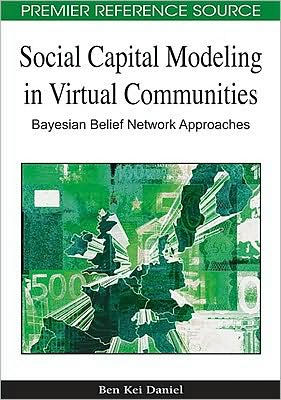Social Capital Modeling in Virtual Communities: Bayesian Belief Network Approaches
Throughout history, the permeation of new technologies have assisted communities in their aim to collectively work together in addressing shared problems for the attainment of specific goals and outcomes. Social Capital Modeling in Virtual Communities: Bayesian Belief Network Approaches broadly examines what constitutes social capital in geographical communities and offers an in-depth description of its potential in virtual communities. Providing the latest findings for advanced undergraduate and graduate students as well as researchers and academicians involved with virtual communities and social capital, this book draws upon insights from interdisciplinary fields such as artificial intelligence, human computer interaction, educational technology, and economics and sociology.
1137766725
Social Capital Modeling in Virtual Communities: Bayesian Belief Network Approaches
Throughout history, the permeation of new technologies have assisted communities in their aim to collectively work together in addressing shared problems for the attainment of specific goals and outcomes. Social Capital Modeling in Virtual Communities: Bayesian Belief Network Approaches broadly examines what constitutes social capital in geographical communities and offers an in-depth description of its potential in virtual communities. Providing the latest findings for advanced undergraduate and graduate students as well as researchers and academicians involved with virtual communities and social capital, this book draws upon insights from interdisciplinary fields such as artificial intelligence, human computer interaction, educational technology, and economics and sociology.
165.0
Out Of Stock
5
1

Social Capital Modeling in Virtual Communities: Bayesian Belief Network Approaches
284
Social Capital Modeling in Virtual Communities: Bayesian Belief Network Approaches
284
165.0
Out Of Stock

Product Details
| ISBN-13: | 9781605666631 |
|---|---|
| Publisher: | IGI Global |
| Publication date: | 05/31/2009 |
| Series: | Premier Reference Source |
| Pages: | 284 |
| Product dimensions: | 7.20(w) x 10.30(h) x 0.90(d) |
From the B&N Reads Blog
